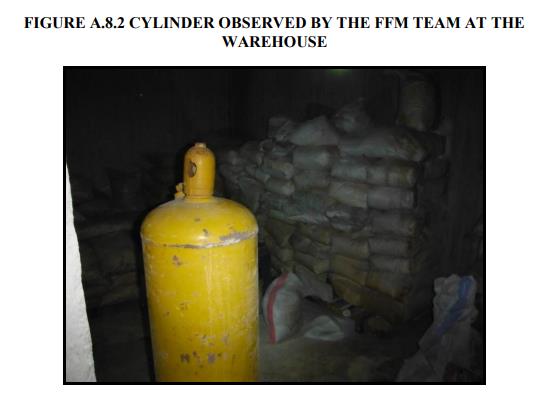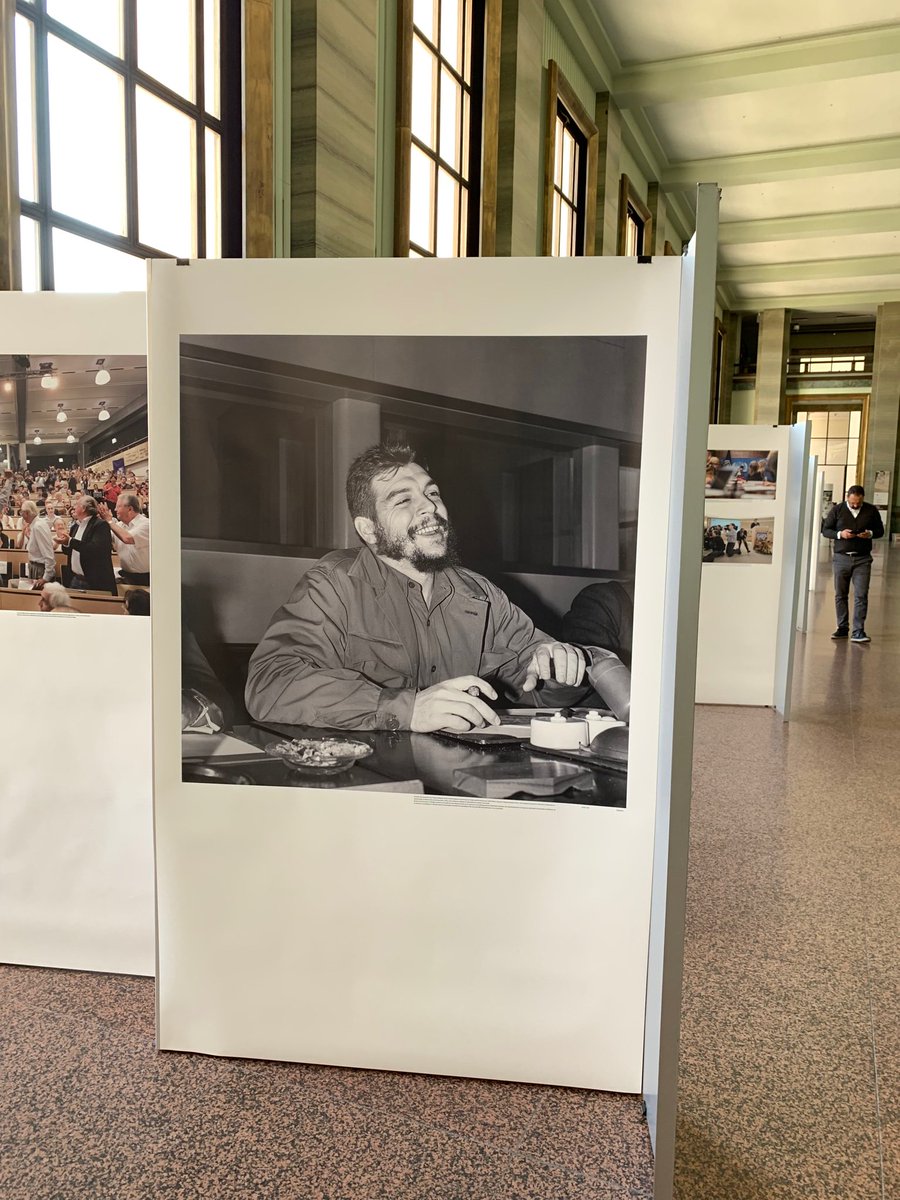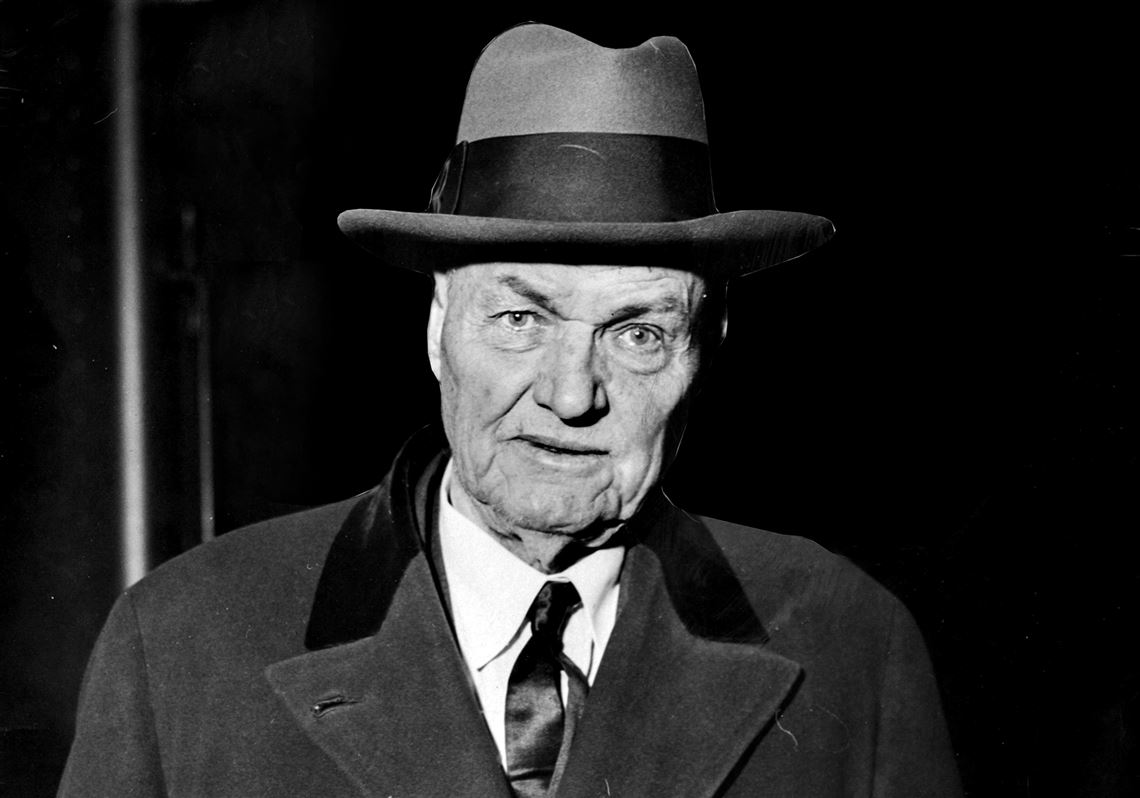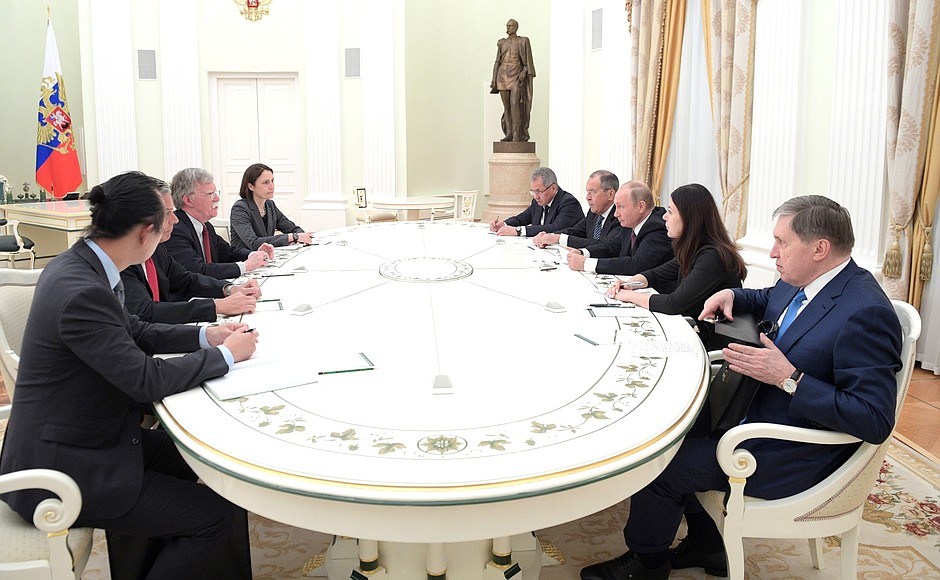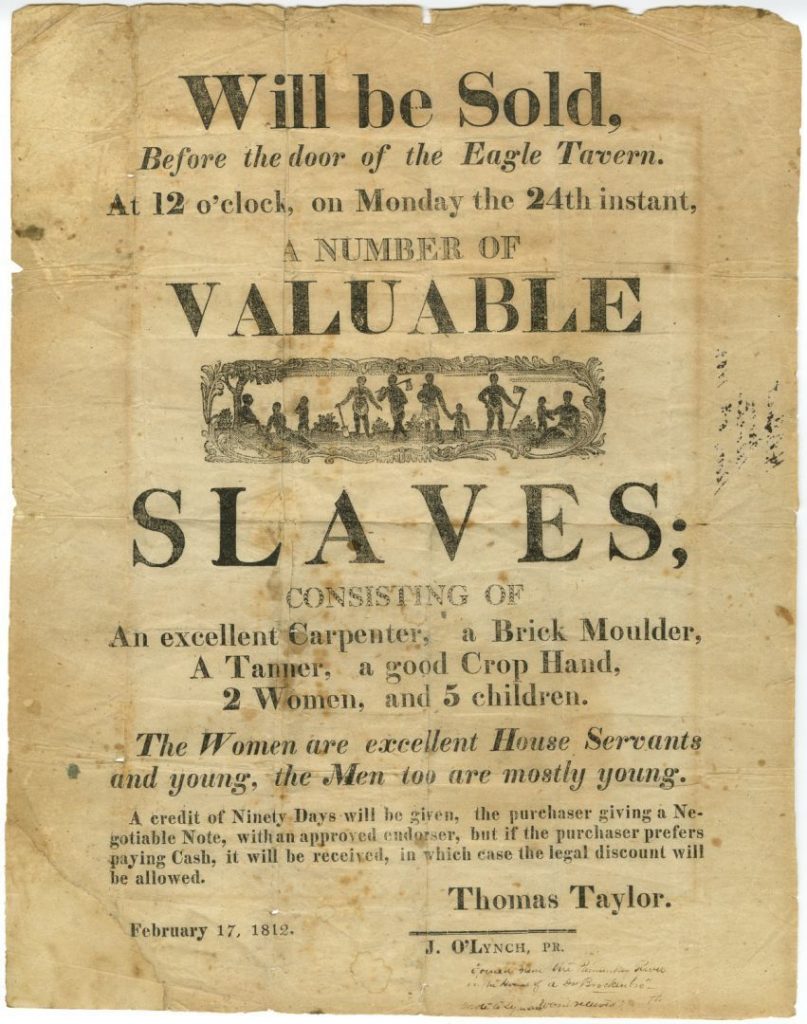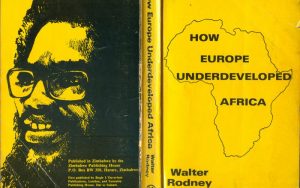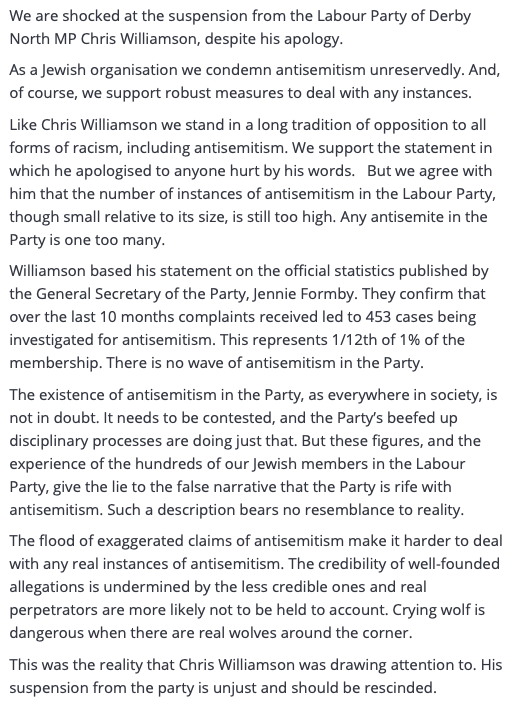The recent release of the proposed Green New Deal is a template, an outline identifying some of the most crucial issues facing the nation regarding climate change and a wish list of measures to address those issues. It contains a variety of inspired agenda items, many of which have been voiced by the Green Party and environmental fringe groups in Washington for over a decade. According to the Deal’s Fact Sheet, 92 percent of Democrats and 64 percent of Republicans support the Deal.
Almost every Democrat throwing their hat into the 2020 presidential race backs it. And the Deal has gained wide approval in the climatology and atmospheric science communities; among hundreds of conservation, environmental, renewable energy, and social activist organizations; and within the younger generation. It has been a long time coming, and the question is whether it is too late. It is optimistic to think that we can reverse accelerating global warming trends and mitigate their impact by keeping the planet below the International Panel on Climate Change’s (IPCC) 1.5 degree C warming mark for the next 12 years, and it is even more optimistic to think that Congress will be able to enact legislation like this without prioritizing the interests of the multinational corporations and lobbies that contribute to their re-election campaigns over the people who elected them.

It took no time for the Deal’s co-authors, Rep. Ocasio-Cortez and Democrat Senator Ed Markey, to be broadsided with disparaging criticisms by corporate leaders and political opponents, including old rank-and-file Democrats. The critics include the President of the Laborers’ International Union of North America, fossil fuel backer Terry O’Sullivan, who labeled the report a “fantasy manifesto” that will create “divisions and inequality.” Billionaire Michael Bloomberg called it “pie in the sky.” And Pelosi and her multi-million dollar corporate colleagues are simply clueless about the “Green Dream or whatever they call it,” as Pelosi dismissed it. But there are plenty of legitimate criticisms too, and progressives would be wise not to let their desire to see pro-environmental legislation enacted at last blind them to the very real problems with Ocasio-Cortez and a legislative blueprint that could very easily become as much of a giveaway to multinational corporations as the Affordable Care Act was to insurance companies.
The Green New Deal largely relies for precedent upon the idealism behind great accomplishments in the US’ history when the nation succeeded in mobilizing to tackle difficult challenges that critics argued could never be accomplished. Examples include FDR’s transformation of the private auto and manufacturing industries to meet military needs during World War 2, Eisenhower’s interstate highway system, and the achievement of JFK’s promise to reach the moon before the end of the 1960s.
Although Washington remains strait-jacked by the interests of the finance and energy lobbies, at the local level, constructive change is happening. Over one hundred cities across the country have issued statements pledging to transition to 100 percent renewable energy.1 Unfortunately, their dateline targets are far off track, and the best case, Hawaii, is looking at reaching 100 percent clean energy efficiency in another 26 years. Farmers are forgoing energy-intensive chemical agriculture and transitioning to organic. And the public is becoming increasingly more aware and educated about their energy usage and slowly changing its consumption habits. Nevertheless, compared to other developed nations, the US lags far behind in reaching realistic targets to address the IPCC’s 1.5 degree prediction, which is overly conservative. Absent the IPCC’s statistical limitations, the actual time frame, according to most independent climate scientists, is more dire. We may have only 7 years to get off fossil fuels.
However, reaching the Deal’s goal is potentially doable if the country’s industries and finance giants get behind it. Sweden already gets over half of its energy from renewables. In 2015, Denmark’s wind farm industry reached 140 percent of energy demands. In 2016 Portugal reached a milestone by operating for four days without any fossil fuels.2 Due to its favorable clean energy geothermal resources, Iceland generates the most clean energy per capita in the world; almost 90 percent of its total energy needs are satisfied by non-fossil fuel sources. Costa Rica has managed to run for over two months on 100 percent renewables. In 10 years, Uruguay’s unique public and private sector partnerships now supply 95 percent of its national energy needs with renewables.3 Many other nations are also making aggressive efforts to power themselves exclusively with clean energy. And where does the US stand? According to the US Energy Information Administration, for 2017, non-fossil fuel sources only accounted for a dismal 20 percent of energy consumption. And still 34 percent of fuel for our electric power sector relies on coal!4 While getting off fossil fuel dependency is absolutely critical, the US’s electricity production only accounts for 28 percent of its greenhouse gas emissions (GHEs). While switching to renewable energy for electrical power needs is very likely achievable, the obstacles to reach the IPCC target are enormous.
In our estimation, several stumbling blocks may make it impossible for the US to eliminate fossil fuels during the next dozen years. Aside from opposition within with the Democratic Party by corporatists such as Nancy Pelosi, Chuck Schumer and Steny Hoyer, the cost to overhaul all industry, manufacturing and current and new technological developments would be astronomical. A Republican-aligned think tank, the American Action Forum, recently published a report estimating the Green New Deal would cost between $51 trillion and $93 trillion over ten years, though the lion’s share of that sum relates to the Deal’s provision of jobs and healthcare for all, rather than its environmental measures. Eliminating carbon emissions from the power and transportation sector, the group said, would “only” cost between $8.3 and $12.3 trillion over a decade. The national debt is already almost $22 trillion and growing. Since Trump took office, the debt has increased $2 trillion, and there is no indication it will shrink. Increasingly extreme weather and its aftereffects will only further raise the debt.
A closer examination of these numbers is required. The “official” price tag of the “War on Terror,” which has laid waste to the Middle East over the last 20 years, creating an endless supply of future enemies by slaughtering entire villages full of civilians via depersonalized drone warfare, recently climbed north of $6 trillion,5 and an investigation last year turned up an eye-popping $21 trillion in fraudulent budgeting by the Pentagon and the Department of Housing and Urban Development6. Thousands of whistleblowers are swept under the rug by the Defense Department’s Inspector General every year in their efforts to call attention to waste and fraud within the wealthiest military in the world. The first-ever attempt to audit the Pentagon, performed last year, was an embarrassing failure, revealing $6.5 trillion had simply vanished.7 The US spends nearly $1 trillion a year on “defense”8– and while no one would suggest dismantling the American military, there are thousands of bases sprinkled around the world in countries the US does not belong, with undeclared conflicts raging in 134 countries.9 Surely some of this largesse could be repurposed to save the planet.
There is always money in the budget for war, which currently eats up more than half of every dollar spent by the US government, despite the fact that the US is not facing any credible military threats from state actors. Despite the evidence-free charges it meddled in the 2016 election, Russia does not pose a threat to the US – indeed, Russian President Vladimir Putin in a recent speech expressed frustration that Russia was “banging on a locked door” regarding friendship between the two nations, rendered all but impossible with every round of draconian sanctions imposed as a form of legislative virtue-signaling by congressmen eager to demonstrate their allegiance in Cold War Part 2.10 Even China prefers to flex its muscles economically, rather than militarily, spending trillions to build its Belt and Road throughout the developing world and amassing allies by funding large infrastructure projects – where the US has historically bullied poorer nations into submissions through military force. The Green New Deal would merely take roughly the yearly expenditure on the War on Terror and use it for constructive, rather than destructive, purposes. Troops returning from costly and destructive foreign wars could even be put to work planting trees or building infrastructure, much as environmental projects are undertaken in less wealthy nations.
Because that scary $12.3 trillion figure is the cost if the Green New Deal were undertaken in the typical American fashion of rolling out grand legislation. If environmental reforms were enacted the way other countries work, the figure would shrink dramatically. Unfortunately, Ocasio-Cortez is open about her wish to work with “business interests” to get the job done, just as Barack Obama was willing to work with the insurance companies to pass the Affordable Care Act, resulting in a ruinously expensive and flawed plan that forced Americans to buy health insurance they could not afford while subsidizing a tiny sliver of the population. Healthcare costs did not go down – they skyrocketed – and healthcare quality certainly did not improve. Involving corporations with their profit-above-all value system guarantees the Green New Deal will enrich wealthy conglomerates like Bechtel and Halliburton. These will receive the big contracts for building renewable infrastructure, repurposing existing infrastructure, etc. but will contract the work out to other, smaller companies while keeping most of the money as profit. The smaller companies will then outsource the jobs (constructing solar panels in the desert, say, or planting a hardy forest on now-barren disused farmland) to poorly-paid local firms, while keeping most of the remaining money as profit. The poorly-paid local firms will then do the jobs with the cheapest materials and shoddiest standards in the hope of retaining whatever funds are left for their CEOs and investors. This is the American way, and it is why any grand infrastructure or rebuilding project costs so much.
If enacted along the lines of past grand projects like the Affordable Care Act, the Green New Deal will essentially be a giveaway to the big corporations Ocasio-Cortez claims to oppose, with her champagne socialism, neoliberal economics degree, and unhealthy affection for the trappings of wealth and power. It is no secret that the very real climate catastrophe we all face has been weaponized by multinational interests interested in pushing global governance measures as the only “solution” to the climate change problem. Too often, this has made those rightly suspicious of the motives of government and the ruling class also doubt the existence of climate change, in a form of guilt by association. But taking action on a grand scale need not be ruinously expensive or involve an authoritarian clampdown on the rights of the individual. China assigned 60,000 soldiers to plant enough trees to cover an area the size of Ireland last year11 with an aim toward eventually upping their forest coverage from 21 percent to 26 percent by 2035. Even Bangladesh – one of the poorest countries in the world – began planting one million trees in 2017 after rural deforestation had so denuded the countryside that farmers were dying from lightning strikes at high rates, copying a similar program in Thailand.12India set a world record – twice! – using millions of volunteers to plant trees in order to bring its forests in line with the commitments it made under the Paris Agreement. With modern technology like “seed bombing,” a single airplane or drone can plant 900,000 trees in a day, dropping seeds encased in ready-to-grow soil bundles. This technology is already used in Africa, and it has advanced significantly beyond simply dropping seeds indiscriminately – modern seed bombing drones are equipped with imaging capability to ensure the seeds go where they are most likely to thrive. None of this requires outsourcing, subcontracting, slicing and dicing profit margins, or any of the typically American approaches to the problem, and it will save billions.
Relying on the government to do the right thing almost invariably leaves one disappointed. If it was not Ocasio-Cortez pushing cooperation with the business community as an integral part of the Deal, it would be another congressperson. When all you have is a hammer, everything looks like a nail, and the US Chamber of Commerce – the “business lobby” – is so massive it’s difficult for lawmakers to see outside its edges. Add in the size of the “energy lobby” and it’s easy to see how lawmakers find it difficult to conceive of taking large-scale action in a way that does not primarily benefit large corporations. The voice of the people has not been heard in Washington in decades, and it’s doubtful it would be recognized if it was heard.
Moreover, although the US is the world’s second-largest emitter of greenhouse gases (15 percent of global total emissions), China far surpasses us at 30 percent. Together with the European Union (10 percent) and India (6 percent), these four regions account for over half of all GHEs. The bottom 100 countries combined only contribute to 3.5 percent. Launching a universal, global environmental Marshall Plan may well be beyond humanity’s means. If we consider that China is currently constructing a single sprawling megapolis that will cover over 83,000 square miles — larger than Great Britain or New England — it is impossible to imagine how such a humongous urban operation could not be unsustainable and fossil-fuel dependent. The booming city of Jing-Jin-Ji will be the heaviest concentration of human beings on the planet, housing upwards of 130 million people, or the equivalent of the combined populations of the world’s four largest cities: Tokyo, New Delhi, Shanghai and Sao Paulo. And all of these residents will want the conveniences of a modern, western lifestyle: more cars, more meat on their tables and more energy-consuming luxuries.
Surprisingly, surveys seem to indicate that the Chinese are better-educated about climate change than the average American. After last year’s record-breaking heatwaves, droughts, deadly flash floods and a category 5 typhoon, 94 percent of Chinese polled said they believe climate change is happening now and 66 percent believe it is anthropocentric. Seventy-three percent are willing to pay extra for climate-friendly products. Yet similar to average Americans, the Chinese are not changing their consumption habits to adapt to the new climate reality. Likewise, similar to the US, the Chinese government is eager to press forward with unsustainable growth projects that will increase rather than decrease emissions.13
Among the other stumbling blocks the Green New Deal faces is that Washington has unfortunately almost reached its goal of being totally energy independent. While we produce the most energy in the world, we also consume the most per capita. The US has also risen to the third largest fossil fuel exporter, after Saudi Arabia and Russia. Together, these three nations account for 38 percent of the world’s total oil.14 At the same time the US still needs to import petroleum, predominantly for our auto and transportation demands. Although the US now produces about 11 million barrels per day, it consumes almost 20 million barrels daily.15 For natural gas production, the US is king, and is expected to reach over 90 billion cubic feet per day of production, according to the EIA.16 Trump’s abhorrent policies have revitalized the coal industry and escalated production. Worse, the oil and coal industries are the recipients of monstrous corporate welfare to the tune of $20 billion in annual government subsidies.17
Jeremy Brecher properly notes that “global warming has rightly been called history’s greatest market failure. Correcting it cannot be left to the market.”18 Unlike the faux urgency for building a silly wall on the border, climate change is THE national emergency. It is a planetary emergency. Therefore, when thousands of large and small coal-gas-oil related companies reap enormous windfalls, employ almost 1.1 million workers — compared to under 374,000 working full- or part-time in solar and 102,000 at wind firms — there is zero incentive for any of these major greenhouse gas emitters to leap off the gravy train and shift to cleaner, renewable forms of energy.19
A second major obstacle to the Green New Deal is that all of our leading institutions, politicians, legislative policymakers and opinion leaders, think tanks and foundations, and the mainstream media that is controlled by these institutions, are not going to truthfully challenge the paradigm of free-market capitalism and the myth that constant economic growth and expansion will better society. This means we only have more toxic pollution, urban sprawl, destruction of the environment and habitats, and depletion of natural resources to look forward to, and with it, warmer seasons and more extreme weather events such as superstorms, droughts, wildfires, and floods.
This may be the 3,000-pound gorilla in the room. We are caught in the perpetual cycle of earning more in order to buy more and accumulate more debt. The transition of weaning ourselves off of fossil fuels to increase investment in renewables and the new technologies necessary to meet the IPCC benchmark means a tradeoff for a much slower or no-growth economy in order to reach a more sustainable and livable future. It may require up to $10 trillion to re-engineer entire industries and infrastructures in order to reach anything close to zero emissions. Yet with America’s new wealthy class of 11 million millionaires governing private industries, investments and policy-making to keep the capitalist engine churning, enactment of the kind of green agenda proposed and demanded today is unlikely. Again, there is no incentive for the ruling elite to cut back on consumption. The legions of lobbyists in Washington will make every effort to scuttle the Green New Deal and ensure it is dead on arrival. The ruling class has no allegiance to nationality. It is the most unpatriotic class in the nation. When the stresses of climate change get tough or their personal security and assets are threatened, the ruling class have the means to pick up and move elsewhere.
Furthermore, the ruling class and the conservative populace — even those educated enough to agree on anthropocentric climate change – lean heavily upon Libertarian values, which means smaller government and more freedom for the free market. Looking at the Green New Deal from any angle, it is clear this plan will require handing over enormous power to Washington. Trust in all branches of government has already eroded to a level where even true progressives doubt anything good can come out of the duopoly in Washington. Therefore, a sizable percentage of the public will be deeply suspicious of the government’s will and competence in executing any legislation that emerges from the Deal’s current outline.
The free-market economy is polluting everything, creating seas of plastic, landfills of toxic junk, and stores of computers and electronic equipment. Forests and ecosystems are being leveled to expand growth. There is little to no time to dramatically change our steel, auto, and high tech industries. And private industries and the population’s collective consumption behaviors will not change overnight. While we commend the Green New Deal’s authors and the progressive caucus that backs it, we encourage the public not to become passive with high expectations that Washington is willing or capable of solving the climate crisis. There are no saviors. Blind faith should not be directed towards the compliance of Washington, nor to new technologies developed to pull us through. We live in remarkably tense times; but drastic times require drastic measures. In fact, the Deal may not be radical enough. Gutting our military expenditure — the largest fossil fuel consumer as well as the top recipient of our tax dollars — and the Washington Consensus’ cowboy adventurism to instigate regime changes as the world burns is absent from its wish list.
Are there any solutions that are doable without the body politic of government standing in the way? Reducing GHEs can no longer be regarded as solely a challenge for government and private industry. It is a responsibility of every individual.
First, the public must become deeply and consciously aware of the climate problem and how our lives and culture contribute to global warming. We must also become deeply and consciously aware of how our lives will change as the world deteriorates. Our education system has been a complete failure in teaching people about the basic science of climate change and the immediate and long-term impacts of global warming. Nothing we can do will efficaciously change the melting of the Arctic ice, the warming oceans and environmental dead zones, multi-gigaton methane burps from the thawing permafrost, the decimation of insect populations that will contribute to national food crises, rising coastal waters and the next season of record-setting wildfires in the Western states. The next category 5 super-hurricane could be the final straw for many Floridians and residents living along the Gulf. Industrial over-consumption is depleting our aquifers. There are in fact hundreds of canaries in the coal mine, not just one.
Second, every person and family can begin to gradually transition to eating a plant-based diet. This does not need to be an abrupt change. We can start by going meatless for a single day every week and then increase the days. The agriculture industry generates anywhere between 10 and 40 percent of GHEs, primarily methane and nitrous oxide, depending upon which metrics are being used in the equations. The United Nation’s Food and Agriculture Organization estimates that livestock production accounts for about 14.5 percent of all human-caused emissions.20 In the US, 42 percent of agricultural emissions come from the raising of livestock, and globally it accounts for approximately 16 percent of all human-induced GHEs.21 When storage, transportation and distribution of meat and produce are added, the CO2 footprint rises substantially. Imagine the footprint of a single bushel of tomatoes traveling from a California farm to a Maine supermarket. If a sufficient number of people also purchase more locally-grown food, this too would have an impact. These are two efforts — a meatless diet and buying locally — that every American can adopt in order to be part of the solution rather than the problem.
Third, our consumption behaviors are traveling on a high speed rail off a cliff. We have the will to make conscientious choices about our buying habits. There is only one solution to this and that is to downsize, purchase only what is essential for our needs and find other ways to increase the quality of our lives. Before making a purchase, consider the item’s carbon footprint before it reaches your hands. As the world gets warmer and the economic and social stresses of life increase, inevitably a time will arrive when people will be forced to downsize. It will no longer be a matter of choice.
Finally, if it is within your financial means, find ways to increase your reliance on renewable clean energy sources. If you can install solar panels to get off the grid and become energy self-sufficient, it will pay off in the long term. Although there remains considerable debate on whether or not our global civilization has reached a “peak oil” moment, oil prices will unquestionably increase steadily in the future.
What the nation can do collectively is adequately if vaguely summarized in the Green New Deal. During a press conference following the report’s release, Sen. Markey and Rep. Ocasio-Cortez were clear that the plan at this time does not include any “individual prescriptions” for the issues outlined. The details and following legislation will be developed following Congressional vote and approval and the creation of a Congressional committee to develop the solutions. However, the Deal is clearly defined as a “national, industrial, economic mobilization plan.” It will take years for the US to become “greenhouse gas emission neutral.” The report notes that it will require “massive investment” to reduce existing and future greenhouse gases. It acknowledges it is crucial to develop and install “a national, energy-efficient smart grid,” upgrade our entire infrastructure, residential and industrial base for “state-of-the-art energy efficiency,” and eliminate GHE from the agricultural industry. The report also includes the need for expanding education and training for such a nationwide mobilization effort.
The report also finally acknowledges that America’s energy grid is a disaster. The majority of people and even most politicians are unaware our energy and power infrastructures are sorely inefficient. In an analysis conducted by Lawrence Livermore National Laboratories to evaluate US energy consumption, 59.1 percent of electricity generation was “rejected energy” — energy lost due to inefficiencies in power plants, engines, buildings, etc.22 Almost all of this “rejected energy” is generated from coal, natural gas and petroleum. In the Livermore report, renewable energy sources such as solar, wind and geothermal barely contributed to any infrastructural energy loss.23 And yet Washington, and the Trump administration in particular, find it economically feasible to subsidize these fossil fuel industries for their ineptitude, negligence towards energy efficiency and exorbitant waste. Even Ocasio-Cortez seems to believe progress can be achieved by working with these monuments to inefficiency. This is naïve at best, and disingenuous at worst. In a true capitalist system – such as our president pays lip service to at every opportunity – the best performers come out on top. Why, then, does the government continually prop up failed systems, from energy to banking? This money would be better invested in funding sustainable alternatives.
A simple fact that opponents of the Deal in private industry, Wall Street and climate change deniers fail to understand as a rule is that the enormous costs for implementing a New Deal are already here. And they have been increasing annually due to rising frequency and damages from extreme weather events due to humanity’s messing with the atmosphere and environment. NASA conservatively reported $91 billion lost in damages due to climate change episodes in 2018 alone.24 And the federal government’s most recent National Climate Assessment warns we will rapidly reach $500 billion per year in economic losses due to sea level rise and worsening weather, droughts, storms, floods and fires.25
Next, it is sheer negligence that the federal and state governments have failed to upgrade our public transportation system. The US falls far behind even banana republics in its inefficient rail system compared to high speed 200-plus mph rails in China, France, Japan and elsewhere. Creating a new high-speed rail system across America may be too optimistic at this time; nevertheless, upgrading our trains between major urban hubs is perfectly doable immediately. This would mean high-speed rails between Boston, New York, Washington, Chicago, Dallas and Houston, and Los Angeles, San Francisco and Las Vegas for starters. High speed trains between these city hubs would significantly reduce the carbon footprint of transportation and could even be faster than airlines after considering time spent at airports. It could also be accomplished at the state level through public-private partnerships. In addition, a tax incentive could be added for those who use public transportation.
Finally, the nation needs to act immediately upon a national reforestation program and roll back the Trump’s regressive orders to further devastate public land and ecosystems to increase corporate profits. Forests and trees are recognized as perhaps the most important natural resource to offset carbon emissions. China and India are making huge advances in reforesting their nations. China has reserved an area four times the size of the United Kingdom for reforestation. There are few areas on the planet with large swathes of forest canopies. Most are located in northern Canada, the Latin American countries in the Amazon basin, Scandinavia and Russia. Therefore, we would recommend a national conservation corps to start an aggressive reforestation campaign. If India can hold the world record in planting 66 million trees within a 12 hour period in 2017, and a single 53-year-old New Delhi resident can plant 1,100,000 trees in a single year, the US could reforest ourselves easily in a short period of time.
For all the Deal’s good points, it will go nowhere if the legislation that results is larded with giveaways to the same industries and corporations that led us to environmental and economic ruin in the first place. Ocasio-Cortez’s desire to liaise with these actors may be born out of a genuine desire for cooperation, but it is more likely her Democratic Socialism is being used as a more palatable face for the same rapacious neoliberalism that has created all the problems the Deal purports to solve. While we wait for government to get its act together and legislate its way out of this mess, we would be wise to begin solving as many problems as we can ourselves even as we hold our government representatives’ feet to the fire.
*
Note to readers: please click the share buttons below. Forward this article to your email lists. Crosspost on your blog site, internet forums. etc.
Richard Gale is the Executive Producer of the Progressive Radio Network and a former Senior Research Analyst in the biotechnology and genomic industries.
Dr. Gary Null is the host of the nation’s longest running public radio program on alternative and nutritional health and a multi-award-winning documentary film director, including Poverty Inc and Deadly Deception.
Notes
1 Steinbrecher, Stephanie. “100 US Cities are Committed to 100 Percent Clean, Renewable Energy.” Sierra Club. 5 Dec 2018. https://www.sierraclub.org/press-releases/2018/12/100-us-cities-are-committed-100-percent-clean-renewable-energy
2 Osborne, Samuel. “Sweden phases out fossil fuels in attempt to run completely off renewable energy.” Independent. 24 May 2016.
https://www.independent.co.uk/news/world/europe/sweden-phases-out-fossil-fuels-in-attempt-to-run-completely-off-renewable-energy-a7047306.html
3 “12 Countries Leading the Way in Renewable Energy.” Click Energy. 10 Aug 2017. https://www.clickenergy.com.au/news-blog/12-countries-leading-the-way-in-renewable-energy/
4 US Energy Information Administration. “Where Greenhouse Gases Come From.” Energy and the Environment Explained. https://www.eia.gov/energyexplained/index.php?page=environment_where_ghg_come_from Retrieved 27 Feb 2019.
5 Watson Institute of International & Public Affairs. “Costs of War.” Brown University. https://watson.brown.edu/costsofwar Retrieved 27 Feb 2019.
6 Skidmore, Mark and Andy Henion. “MSU scholars find $21 trillion in unauthorized government spending; defense department to conduct first-ever audit.” MSUToday. 11 Dec 2017. https://msutoday.msu.edu/news/2017/msu-scholars-find-21-trillion-in-unauthorized-government-spending-defense-department-to-conduct/
7 Syrmopoulos, Jay. Audit: Pentagon Cannot Account for $6.5 Trillion Dollars in Taxpayer Money.” MintPress. 8 Aug 2016. https://www.mintpressnews.com/audit-pentagon-cannot-account-6-5-trillion-dollars-taxpayer-money/219246/
8 Cordesman, Anthony. “US Military Spending: The Cost of Wars.” Center for Strategic & International Studies. 10 Jul 2017. https://www.csis.org/analysis/us-military-spending-cost-wars
9 Turse, Nick. “America’s Secret War in 134 Countries.” The Nation. 16 Jan 2014. https://www.thenation.com/article/americas-secret-war-134-countries/
10 “Putin: Russia is not an enemy of US, but it will not be banging on a locked door.” FARS News Agency. 21 Feb 2019. https://www.msn.com/en-ae/news/other/putin-russia-is-not-an-enemy-of-us-but-it-will-not-be-banging-on-a-locked-door/ar-BBTTCfE
11 Osborne, Samuel. “China reassigns 60,000 soldiers to plant trees in bid to fight pollution.”Independent. 13 Feb 2018. https://www.independent.co.uk/news/world/asia/china-tree-plant-soldiers-reassign-climate-change-global-warming-deforestation-a8208836.html
12 “Bangladesh plants 1 million trees to cut lightning toll.” Straits Times. 24 Jan 2017. https://www.straitstimes.com/asia/south-asia/bangladesh-plants-1-million-trees-to-cut-lightning-toll
13 Jing, Lin. “Does the Chinese public care about climate change?” China Dialogue. 21 Sep 2018. https://www.chinadialogue.net/article/show/single/en/10831-Does-the-Chinese-public-care-about-climate-change–
14 Wilson, Robert. “Which Countries Produce the Most Fossil Fuels?” The Energy Collective Group. 31 Jul 2014. https://www.energycentral.com/c/ec/which-countries-produce-most-fossil-fuels
15 Gaffen, David and Ayenat Mersie. “US crude oil output hits 11 million barrels per day for first time ever.” Reuters. 18 Jul 2018. https://www.reuters.com/article/us-usa-oil-eia/us-crude-oil-output-hits-11-million-barrels-per-day-for-first-time-ever-idUSKBN1K81XT and US Energy Information Administration. “How much oil is consumed in the United States?” Frequently Asked Questions. 3 Oct 2018. https://www.eia.gov/tools/faqs/faq.php?id=33&t=6
16 US Energy Information Administration. “Short Term Energy Outlook.” Analysis & Projections. 12 Feb 2019. https://www.eia.gov/outlooks/steo/report/natgas.php
17 Roberts, David. “Friendly policies keep US oil and coal afloat far more than we thought.” Vox. 26 Jul 2018. https://www.vox.com/energy-and-environment/2017/10/6/16428458/us-energy-coal-oil-subsidies
18 Brecher, Jeremy. “The Green New Deal can work – here’s how.” AlterNet. 25 Feb 2019. https://www.alternet.org/2019/02/the-green-new-deal-can-work-heres-how/
19 2017 US Energy and Employment Report. Energy.gov. January 2017. https://www.energy.gov/downloads/2017-us-energy-and-employment-report
20 Gustin, Georgina. “Factory Farms Put Climate at Risk, Experts Say in Urging Health Officials to Speak Out.” Inside Climate News. 23 May 2017. https://insideclimatenews.org/news/22052017/factory-farms-cafos-threaten-climate-change-world-heath-organization
21 Friedman, Lisa et.al. “The Meat Question, by the Numbers.” New York Times. 25 Jan 2018. https://www.nytimes.com/2018/01/25/climate/cows-global-warming.html
22 Fares, Robert. “Is the US Energy Independent?” Scientific American. 31 Oct 2016. https://blogs.scientificamerican.com/plugged-in/is-the-u-s-energy-independent/
23 ibid.
24 Zorn, Justin Talbot et.al. “A Green New Deal is fiscally responsible. Climate inaction is not.” Guardian. 25 Feb 2019. https://www.theguardian.com/commentisfree/2019/feb/25/green-new-aoc-deal-fiscally-responsible-climate-inaction
25 Irfan, Umair. “3 big takeaways from the major new US climate report.” Vox. 24 Nov 2018. https://www.vox.com/2018/11/24/18109883/climate-report-2018-national-assessment


